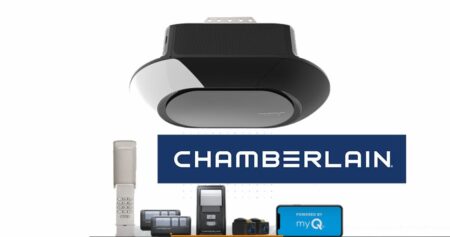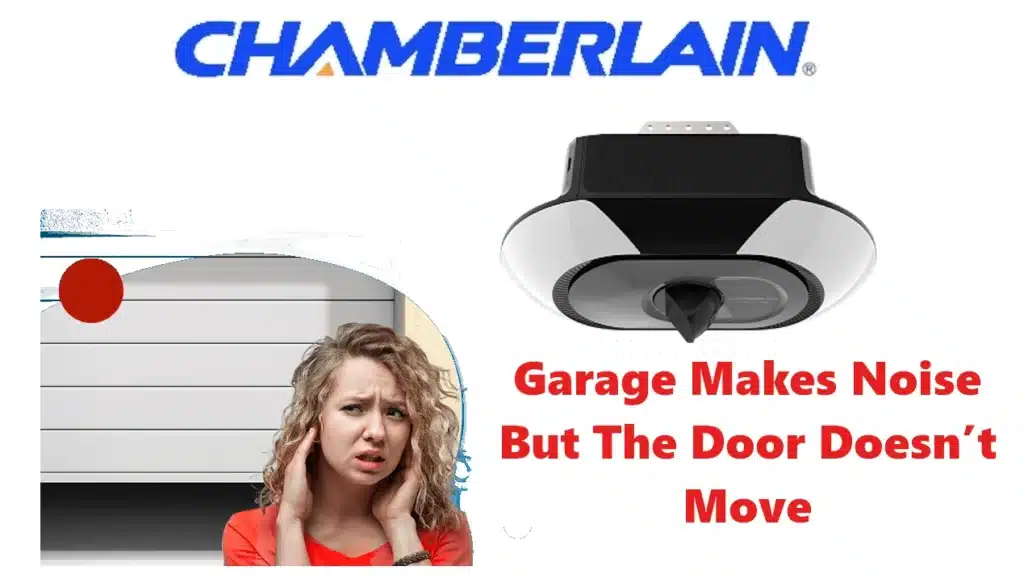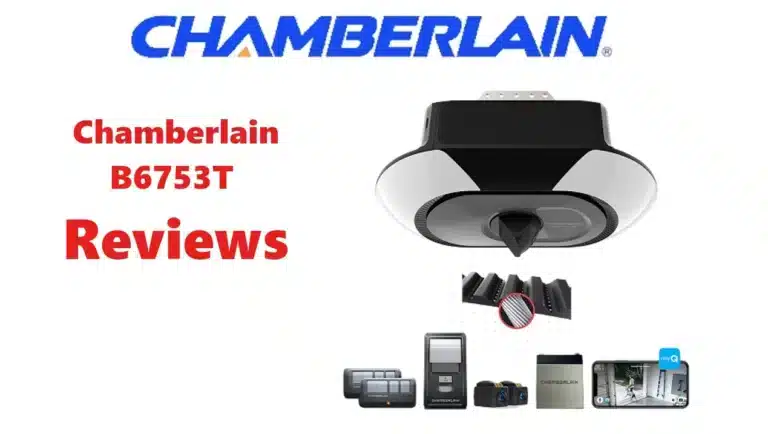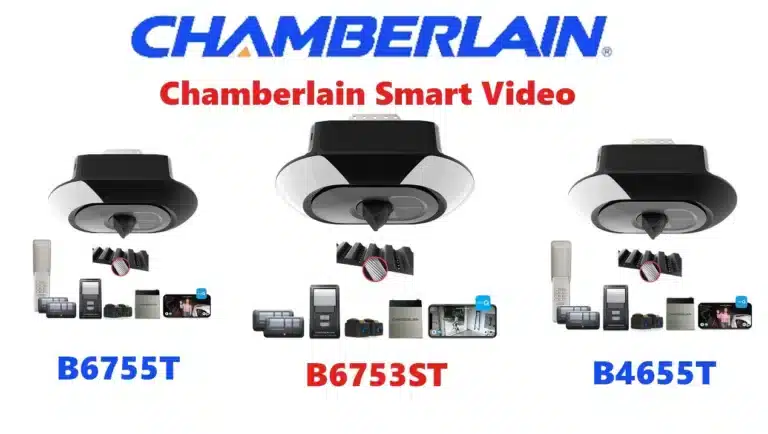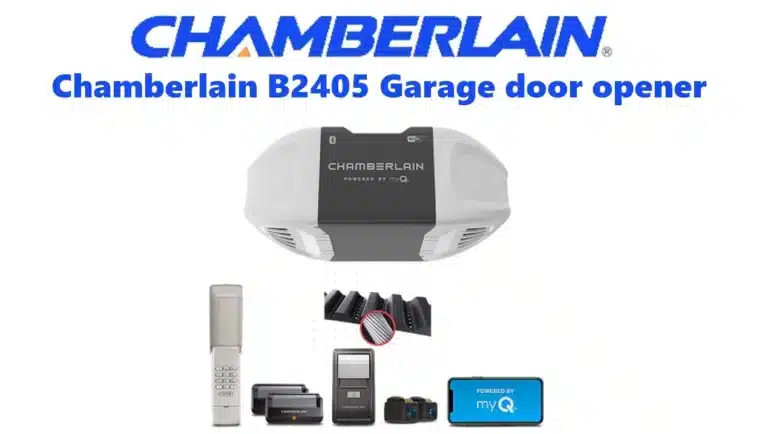If you hit the button on your Chamberlain garage door opener and hear the motor humming or grinding yet the door remains stubbornly still, frustration sets in quickly. In reality, an opener that makes noise but does not lift or lower the door is signalling that something is wrong. Understanding the potential causes and how to troubleshoot them can save time, money and prevent further damage. This comprehensive guide explores the most common reasons Chamberlain openers hum without moving the door, provides step‑by‑step troubleshooting instructions, explains when professional service is necessary, and shares preventative maintenance tips to keep your garage door operating smoothly.
Why an Chamberlain Opener Hums but the door stays still
A Chamberlain garage door opener is designed to convert the motor’s rotational force into linear motion that lifts and lowers the garage door. When the opener makes noise yet nothing happens, one or more components in the drive system, lifting mechanism, or sensors may be compromised. The motor may still spin or hum, but if its torque cannot transfer to the door, the door remains immobile. Common reasons include a broken drive chain or belt, a disengaged trolley, misaligned safety sensors, burned‑out motor gears, a failed start capacitor, power interruptions, broken springs or blocked tracks. Diagnosing the specific issue often requires a combination of visual inspection and simple tests.
To help you identify the problem, the following sections break down each potential cause, the symptoms to look for, and remedies supported by manufacturer advice and industry experts.
Common Causes And How To Diagnose Them ?
1. Broken or loose drive belt/chain
Chamberlain openers use a belt or chain connected between the motor’s drive sprocket and the trolley. If this connection breaks, the motor will hum or run but the trolley won’t move. According to the State 48 Garage Doors article, a broken drive belt or chain is a frequent culprit; when it snaps, the motor keeps turning while the trolley remains stationary. You may also notice slack or sagging in the chain/belt when inspecting the opener. When the belt or chain becomes loose, it may slip on the sprocket, causing a humming sound without moving the door.
How to diagnose: Disconnect power to the opener and remove the cover. Inspect the belt or chain for visible damage, missing links, or excessive slack. Try manually pulling the chain/belt – if it moves freely without moving the trolley, it is broken or detached. Tighten loose chains per the owner’s manual or replace damaged components.
2. Disconnected trolley or emergency release cord
The trolley is the mechanism that travels along the rail, pulling the door open and pushing it closed. Many Chamberlain openers feature a red emergency release cord that disengages the trolley from the chain or belt. If the emergency release has been pulled, the trolley will remain disconnected and the motor will run without moving the door. State 48 Garage Doors explains that a disconnected trolley can occur due to wear or misalignment, causing the motor to run while the door does not move. Central Ohio Garage Door similarly notes that if the disconnect switch is engaged, the door refuses to move; reattaching it to the trolley solves the problem.
How to diagnose: Inspect the red emergency release cord. It should hang down and engage the trolley. Pulling the cord again (toward the door) will reattach the trolley to the belt/chain. If the trolley is disconnected, slide it back into place and ensure it locks onto the drive system.
3. Misaligned or obstructed safety sensors
Since the early 1990s, garage door openers have included photoelectric safety sensors near the bottom of the door rails. These sensors create an invisible beam; when the beam is broken or misaligned, the opener is disabled to prevent injury. State 48 Garage Doors notes that misaligned sensors can cause the opener to hum but not open. My Garage Door Services adds that misaligned or dirty safety sensors may prevent the door from closing and cause a humming motor with no movement. The sensors may have been bumped out of alignment, blocked by debris, or the wiring may be loose.
How to diagnose: Look at the LED indicators on each sensor; Chamberlain sensors typically have one green and one orange light. Both should be solid when aligned. If they are flashing or off, gently adjust each sensor until they align. Remove any dirt or cobwebs and ensure the wires are intact. If alignment fails, the sensor may be faulty.
4. Broken torsion or extension springs
Garage doors rely on torsion or extension springs to counterbalance the door’s weight. If a spring snaps, the door becomes extremely heavy and the opener may hum but cannot lift it. Central Ohio Garage Door warns that broken springs make the door too heavy to lift; you might hear a loud bang and the door will struggle to open. Because spring tension is critical, replacing springs is dangerous and should be performed by a professional. Andrew’s Gates & Garage Doors also emphasises that inspecting torsion or extension springs should be part of diagnostics.
How to diagnose: Disconnect the opener using the emergency release, then attempt to lift the door manually. If the door is extremely heavy or cannot be lifted beyond a few inches, a spring may be broken. Look for a gap in the torsion spring along the bar or a loose extension spring. Call a qualified garage door technician to replace the springs safely.
5. Damaged or jammed door tracks and rollers
Bent tracks or damaged rollers can prevent the door from moving even though the motor is trying to operate. Andrew’s Gates & Garage Doors suggests inspecting tracks and rollers for debris or misalignment, and tapping minor bends back into shape. My Garage Door Services warns that obstructions in the tracks or misaligned tracks can cause the opener to hum because the motor is trying to force the door but cannot.
How to diagnose: Visual inspection is key. Look along the vertical and horizontal tracks for dents, bends or debris. Check that rollers can travel freely. Clear any obstruction and gently straighten minor bends with a rubber mallet. Lubricate rollers and hinges with a silicone‑based lubricant. If tracks are severely bent or rollers worn, call a technician for replacement.
6. Worn or stripped internal gears or sprockets
Inside the opener’s motor housing are gears and a sprocket that transfer the motor’s rotation to the chain or belt. These plastic or metal gears can strip over time, especially if the door is heavy or not maintained. My Garage Door Services notes that a stripped gear or worn motor causes the opener to hum because the motor spins but fails to transfer motion. Chad’s Garage Doors suggests inspecting the gear and sprocket for wear when troubleshooting. Andrew’s article also lists worn gears in the gearbox as a cause of a motor humming with no engagement.
How to diagnose: Unplug the opener and remove the cover. Look for shredded plastic or metal shavings near the gear assembly. If teeth on the large white gear are worn smooth or broken, it must be replaced. Gear replacement kits are available, but replacing them can be complex; consider hiring a professional if you are not comfortable working with internal components.
7. Failed start capacitor
Many Chamberlain openers use a start capacitor to provide the surge of energy needed to start the motor. A failed capacitor is a common reason for a motor humming but not turning. According to 850 Garage Doors, the most common sign of a bad capacitor is a humming motor without movement. The capacitor stores energy and releases it to create the necessary torque for the . Symptoms include humming without movement, slow operation, the door moving a few inches then stopping, or a visibly swollen or burnt capacitor. My Garage Door Services likewise says that a failed capacitor may not show visible damage and requires testing.
How to diagnose: Unplug the opener. Remove the cover and locate the cylindrical capacitor (often under a small cap). Look for swelling, leaking or burnt areas. Even if it appears normal, it may still be defective. If you have a multimeter that can test capacitors, discharge the capacitor, set the meter to capacitance, and compare the reading to the rating on the capacitor. If it is significantly off, replace it. Always discharge capacitors safely before handling. When in doubt, call a technician.
8. Power supply, remote or wiring issues
A humming motor can also signal insufficient power reaching the motor or issues with remote controls. BCS Overhead Door lists power supply problems, sensor misalignment and remote control issues among common opener problems. TechRBun notes that electrical or power supply issues such as insufficient voltage or faulty wiring can cause a motor to hum without moving. The opener may be plugged into a GFCI outlet that has tripped, the circuit breaker may have blown, or the plug may be loose. Additionally, dead batteries in remote controls or a locked control panel can cause the opener to hum but not engage.
How to diagnose: First check that the opener is plugged in securely and the outlet is working by plugging in another appliance. Reset any tripped GFCI outlet or circuit breaker. Inspect the power cord for damage. Replace batteries in remote controls and ensure the wall button or lock mode is not engaged. If the opener hums while the lights flicker or dim, there may be electrical issues – call an electrician.
9. Chain or belt off the sprocket or misadjusted travel limits
Sometimes the chain or belt can slip off the sprocket or become so loose that it simply rides over the sprocket, causing a humming sound but no movement. My Garage Door Services points out that the chain or belt may have slipped off the sprocket or be loose/worn, leading the motor to spin without engaging the door. The travel and force settings on the opener also determine how far the door moves and the force used. Incorrect settings can cause the opener to hum without fully engaging, such as if the down travel limit is reached too soon or the force is set too low.
How to diagnose: Inspect the chain or belt to ensure it sits properly on the sprocket and is tensioned correctly. Adjust tension using the turnbuckle or screw on the trolley. Review the travel and force adjustment knobs or screws on the opener housing; refer to your user manual to fine‑tune them. If adjustments are unclear, consult a professional.
10. Frozen or locked door
In cold climates or if the door has not been used for a long time, the door itself may freeze to the ground or the lock may inadvertently be engaged. Andrew’s Gates & Garage Doors reminds homeowners to check if the door is frozen or manually locked before assuming the opener has failed. Trying to operate a frozen or locked door can cause the motor to hum without movement and may damage internal components.
How to diagnose: Look for a manual lock bar on the inside of the garage door – ensure it is disengaged. In winter, check for ice around the bottom of the door; melt the ice before operating the opener. Attempt to open the door manually via the emergency release. If it is stuck, free the door first.
Step‑by‑step troubleshooting guide
Once you understand the possible reasons your Chamberlain opener hums but does not move the door, you can systematically troubleshoot the problem. The following steps combine the advice from experts and manufacturer guidelines.
- Ensure power and remote operation – Check that the opener is plugged into a working outlet and the circuit breaker/GFCI is not tripped. Replace remote batteries and verify that lock mode is not activated on the wall control. BCS Overhead Door emphasises starting with power supply and remote control checks.
- Test the door manually – Pull the emergency release cord to disengage the opener. Attempt to lift the door by hand. If the door is heavy or stuck, inspect springs, tracks and rollers. Central Ohio notes that a heavy door indicates broken springs, while My Garage Door Services suggests that jammed tracks or rollers cause similar issues. Do not attempt to fix springs yourself.
- Reengage the trolley – After confirming the door moves freely, reconnect the trolley by sliding it along the rail until it locks onto the chain or belt. Many owners accidentally leave the emergency release disengaged.
- Inspect the drive system – With power disconnected, remove the opener cover. Examine the belt or chain for breakage or slack, and ensure it sits on the sprocket. Tighten or replace as needed. Look for shredded gears or metal shavings, which indicate worn internal gears, and replace them if necessary.
- Check safety sensors – Clean the sensor lenses and ensure they face each other. Adjust until their indicator lights are solid. A beam interruption will prevent the door from moving.
- Test the capacitor – If the motor hums but doesn’t start, and other components seem fine, suspect the start capacitor. 850 Garage Doors warns that a bad capacitor often causes humming. Inspect for swelling or leaking and replace with a matching component if testing indicates failure. Always discharge the capacitor before handling.
- Adjust travel and force settings – Consult your manual to adjust travel limits and force. If the opener stops too early or cannot lift the door due to low force, adjust accordingly.
- Reset or reprogram – Some issues can be resolved by resetting the opener. Unplug the unit for 10 seconds, then plug it back in. For remote and keypad issues, reprogram them following the manual. TechRBun suggests checking remotes, drive system and reprogramming as part of troubleshooting.
- Call a professional – If troubleshooting does not resolve the problem or if you encounter broken springs, serious electrical issues, or complex gear replacements, call a qualified garage door technician. Chad’s Garage Doors advises calling a professional if problems persist after basic checks, while Central Ohio warns that spring replacement is dangerous for homeowners.
Preventative maintenance to avoid future malfunctions
Regular maintenance can reduce the likelihood of your Chamberlain opener humming without moving the door. Garage door experts recommend simple habits that extend the life of your opener and door system.
- Inspect and lubricate twice a year – BCS Overhead Door suggests performing maintenance twice a year, including checking and tightening hardware, lubricating moving parts with appropriate lubricant, and testing safety features. Clean tracks and rollers, and lubricate hinges, springs and the chain/belt (if not belt‑drive, which typically uses a reinforced belt requiring little lubrication). Regular lubrication reduces friction and wear on gears and moving parts.
- Check springs and balance – Visually inspect torsion or extension springs for rust, gaps or damage. A1 Garage Door Service points out that a humming motor can indicate drive system or internal gear issues, but broken springs are also a possibility. Have springs inspected annually and replaced by professionals when worn.
- Clean and align safety sensors – Keep the sensor lenses free of dirt and ensure alignment after any accidental bump or adjustment. Misaligned sensors cause needless service calls.
- Test the door’s balance – Disconnect the opener and lift the door halfway. If it stays in place, the door is balanced. If it falls or rises, springs may need adjustment. Balanced doors reduce strain on the opener.
- Install surge protectors – 850 Garage Doors recommends using surge protectors to protect electronics and the capacitor from power surges. Power spikes can damage circuit boards and capacitors, causing the motor to hum.
- Avoid overloading the opener – Do not hang heavy objects from the door or opener. Check that the door is not too heavy for your opener’s weight rating. TechRBun notes that overuse or strain can damage capacitors and gears, leading to humming.
- Monitor and replace old openers – My Garage Door Services suggests replacing an opener that is over ten years old and experiencing multiple issues. Newer models offer improved safety features and reliability.
When to consider professional repair or replacement
While many homeowners can perform basic troubleshooting, certain problems require professional expertise and specialised tools. Consider calling a garage door technician when:
- Springs are broken – Springs are under extreme tension and pose a serious injury risk. Central Ohio emphasises that spring repair or replacement should be left to professionals.
- Internal gears or motor are damaged – Replacing stripped gears, sprockets or the motor itself can be complex. Although kits exist, proper alignment and lubrication are essential. Chad’s Garage Doors recommends calling a professional if the problem persists after simple checks.
- Electrical problems – If you suspect wiring issues, burnt smell, or repeated tripping of the circuit breaker, hire a licensed electrician or garage door technician. TechRBun points out that electrical issues can cause the motor to hum without movementt.
- Capacitor replacement – While it is possible to replace a capacitor yourself, discharging and wiring it incorrectly can be dangerous. If you are unsure, consult a professional. 850 Garage Doors outlines proper safety steps.
- Door is misaligned or severely damaged – Bent tracks, damaged rollers or misaligned doors may require professional realignment or replacement. Attempting to hammer or bend the door can cause further damage or injury.
Conclusion
A humming Chamberlain garage door opener that does not move the door is more than a nuisance—it is a warning sign. By understanding the interconnected components of your opener and garage door system, you can diagnose issues such as a broken belt or chain, disconnected trolley, misaligned sensors, stripped gears, failed capacitors and more. Systematic troubleshooting and regular maintenance help prevent these problems and ensure safe, reliable operation. When in doubt, or when faced with heavy or complex repairs, do not hesitate to call a qualified technician. The peace of mind and safety of a properly functioning garage door are worth the investment.
Garage door openers work hard every day; a little attention goes a long way. Perform periodic checks, keep the system clean and lubricated, protect electrical components, and watch for signs of wear. Following these best practices will help you avoid the frustration of a noisy opener that won’t move the door and extend the life of your Chamberlain opener for years to come.

